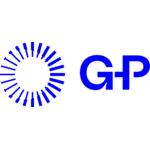HR Tech M&A happens for many reasons as we can see by studying the WorkDay/Peakon acquisition, as well as the relative strengths acquiring companies have versus startups.
This post is about how larger companies have much lower cost of capital, and can use this to fund acquisitions, as well as the growth of those companies post acquisition.
To put it more simply, big companies can get money more easily than small companies, and can use that to their advantage.
This is an important concept to anyone who wants to understand why big and small HR Tech companies do a lot of the things they do when it comes to fundraising, and mergers.
It also has implications for software pricing, sales incentives, product roadmaps, and much more.
What does cost of capital mean?
Cost of capital refers to the return a borrower is required to pay back over time to someone who gives them money. This rate varies depending on the risk of the borrower.
Pretend you have $1,000 of extra money laying around that you want to lend out to someone. If that entity is really safe, like the US Government, then you probably only need to get a 2-3% return each year from the borrower in order to be convinced to lend them money.
If you do this 10,000 times, you are most likely going to get repaid every single time.
Now think of a friend that is trustworthy and wants to borrow the $1,000. You feel pretty good about it, but you will probably want more than a measly 3% return, just in case something weird happens and they don’t pay you back.
You figure in 10,000 rolls of the dice, you may not get paid back in 500 of them, so you want a 7% interest rate to compensate you for your risk. If you don’t get the higher rate, you can just lend to the risk free government.
Now let’s pretend a very risky friend comes along who you think may have a gambling problem. There’s a 40% chance they don’t pay you back, so you need them to pay back big time (20% interest!) to compensate you for your risk.
Cost of capital with companies
Investors are doing the same calculus when they give money to companies. A safe company, like WorkDay, can borrow money at super low rates. They have a long track record, recurring revenue from great customers, and generally aren’t going anywhere.
A startup on the other hand is like your friend with the gambling problem. They have a high risk of never paying you back, and so as an investor you’d need to get a much higher return.
Many venture capitalists have a required return of over 100% each year when investing in startups, versus the public equity and debt investors that give WorkDay money and expect single digit annual returns.
This of course gives larger, stable companies a massive advantage over startups. WorkDay can take out a loan at 5%, and go on a shopping spree versus the Series A startup that needs to give up a huge portion of their company.
From the startup’s perspective
Let’s say we run a $1 million revenue SaaS company with a brand new way to do employee recognition. We’re growing fast, but aren’t profitable, so need to raise money from investors.
We get an offer to raise $5 million at a $20 million valuation, which would give up 25% of the company. The VCs are betting we can get to $10 million of revenues, and reach a value of $100 million in 4 years.
This means that in 4 years, we will give them back $25 million, thats a 400% return for the VCs or around 100% per year!
If we don’t hit our numbers each year and stay on this track, there’s a good chance our VCs will fire our VP of sales, CMO, and probably CEO in order to try and hit those goals.
We can go down this path, or maybe WorkDay comes along and says look, we can raise the $5 million at a 5% interest rate (not 100%!), grow the company to $10 million of revenues, and share in the upside through an earnout.
That’s the beauty of being a reputable investment (equity or debt). You can get that $5 million way cheaper than the startup, even though it’s being used for the same purpose, and entice this fast growing company to join forces.
This massive difference in cost of capital results in many mergers in the HR Tech space. It also incentivizes startups to focus on recurring revenues when constructing their pricing plans, sales compensation, and product roadmaps.
More recurring revenues and growth mean lower cost of capital. This is why HR Tech buyers can more easily negotiate on setup fees and other one time expenses.
It’s also why your ATS vendor is much more likely to be building a sourcing tool they can upsell you on versus the non-critical bug you’ve been asking about for the last 3 months.
While understanding this concept is a bit financy and most relevant for people working in M&A, VC, etc - I hope it’s also a useful framework for understanding the news, along with the incentives that drive the strategic decisions at your favorite vendor.



























